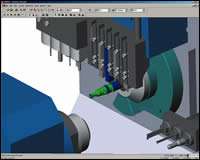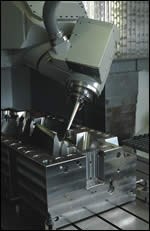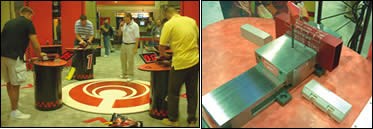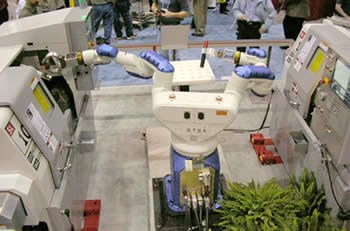CAM Technology Trends
More than the products themselves, the CAM industry is changing the way it does business and moldmakers should take note.
The biggest change happening in the CAM industry isn’t in the software products themselves, but in the way CAM companies must now do business. Their customers are moving away from controlling everything within the four walls of a single plant and toward a global supply chain.
In this scenario, tasks are distributed to wherever they provide the most value to the manufacturer, which means that departments within the same company may be hundreds or even thousands of miles apart. In this type of distributed work environment, manufacturers expect software companies to provide solutions that work regardless of where their employees, subcontractors or manufacturing plants are located.
Featured Content
New advances in machine tool technology have also kept the CAM industry on its toes. The complexity of these machines requires advanced technology to program them efficiently and simulate all aspects of the machine motion.
Global Manufacturing Is Changing the Way CAM Software Is Developed
New manufacturing requirements are forcing CAM companies to take a closer look at their software development processes and sales distribution networks in order to deliver their products and software support to all countries where manufacturing plants are located. Traditionally, American software developers would release the English version of their product and then translated versions would follow a few months later, but that luxury is no longer possible. Global manufacturers are demanding a simultaneous release that includes all languages so that non-U.S. plants don’t lag behind their U.S. counterparts in software technology. In addition, customers want support in every country where they run manufacturing plants. No one wants to deal with multiple time zones and language barriers to get a question answered.
For smaller CAM companies, these harsh new realities have forced some to recognize that they simply cannot afford to provide this type of global support. For larger companies with already hefty marketing and distribution budgets, it may not be feasible to increase development costs to gain access to niche markets in specific countries. This has led to increased CAM industry consolidation, where a larger company with a well-established global network acquires a smaller company that produces an excellent product in a specific niche.
More Emphasis on Reliability and Speed
CAM customers fall into two broad groups: those who need to produce CNC programs as quickly as possible and those who need to produce CNC code that machines as efficiently as possible. In either case, users are increasing their demand for more reliable code. CAM developers are putting more consideration into making their systems easier to use, but the real emphasis has been on generating more efficient code that shaves seconds and minutes from every machining cycle.
CAM developers realize that a slick interface makes their system easier to sell, but the real bread and butter for any shop is producing parts as quickly and reliably as possible. To improve profitability for their customers, CAM companies have decided to allocate the majority of their development resources to improving cycle speeds and software quality while taking into consideration the overall user experience as an added bonus.
Hard Milling and High-Speed Machining
Traditional CAM toolpaths are the bane of high-speed machining because they allow sharp changes in tool direction, which require sharp reductions in the feedrate to avoid tool breakage. To eliminate this problem, CAM companies have developed specialized toolpaths that use mathematical algorithms to calculate the shape of cutter paths based on maintaining a constant cutter load. This is accomplished by analyzing the amount of material in contact with the tool at any given time and adjusting the cutting path to prevent the tool from ever becoming overengaged. These new toolpaths are particularly well-suited to machining hardened materials, parts with thin walls where tool pressure becomes a factor, and for utilizing the full capabilities of high-speed machining centers.
Although these advanced algorithms were developed for high-speed machines, they’ve proven very beneficial to all machine shops regardless of the type of CNC machines they currently have on the floor. A constant cutter load produces less pressure and vibration from the tool, which not only supports faster feedrates and faster spindle speeds—at greater depths-of-cut than traditional toolpaths—but also extends tool life and machine life as well.
For hard milling applications, companies are using shorter tools to improve rigidity. The problem is that these tools cannot reach into deep cavities. Some CAM companies have resolved this issue by allowing the user to cut as much of the toolpath as possible with three-axis milling strategies. When the software senses a tool or holder collision, the toolpath can be split and converted to a five-axis cutter path.
Programming for Multi-Task Machines
Multi-task machines that combine milling and turning on multiple spindles and multiple turrets with live tooling have become far too complex to program manually. Advanced CAM technology now offers better support for multi-axis, multi-spindle and multi-turret machines to get the most out of these investments. This is largely due to the partnerships that CAM developers have forged with machine tool builders so that CAM technology can be developed in step with machine tool advancements.
Realistic Machine Simulation
With so many moving components on new machine tools, particularly multi-task machines, it has become critically important to simulate every aspect of a machining operation to ensure that machine components, tools and parts don’t collide.
Many CAM systems now support the simulation of all machine movement, not just the part, tool and toolholder. Solid models are used for any machine component the user wants to simulate, with each assigned a type of movement: fixed, linear (X, Y, Z), or rotary motion (A, B, C). Motion for each component also can be defined in relation to other components. For example, it’s possible to define a turret with the B-axis mounted on an X-axis mounted on a Y-axis mounted on a Z-axis.
Industry Consolidation Will Continue
As the CAM industry continues to mature, more consolidation will take place. Only companies with a worldwide distribution and support network will be able to survive. CAM companies will continue to focus their development efforts in specific niche markets where they can outshine the competition and increase collaboration with other software developers to reduce development costs.
It’s a more effective business strategy to license or purchase specific technology that’s already been developed by experts than it is to develop everything in-house. That way, a customer can pick and choose the right solutions for their manufacturing environment and purchase them all from the same vendor.
The result of this consolidation and collaboration is a better focus on specific industries such as molds, progressive dies and others. This provides a single point of contact for software support. Stronger partnerships with CAD companies, machine tool builders, cutting tool manufacturers, and machine controllers help everything work together as new technology is developed.
RELATED CONTENT
-
Detecting Water Flow Restrictions
A look at how taking the time and data to analyze a mold problem will help you repair it right—and permanently—the first time.
-
Designing Flow Leaders and Restrictors
Use simulation to control flow in your injection molds.
-
Mold-Design Review: The Complete Checklist
Gerardo (Jerry) Miranda III, former global tooling manager for Oakley sunglasses, shares his complete mold-design checklist, an essential part of the product time and cost-to-market process.
















